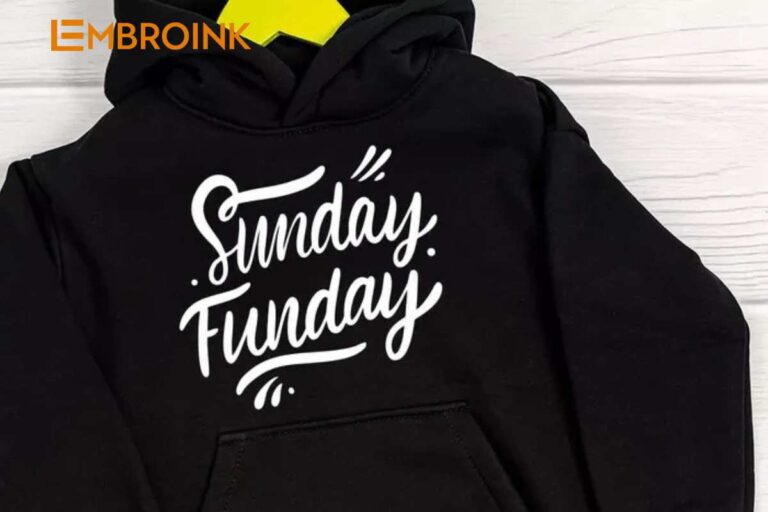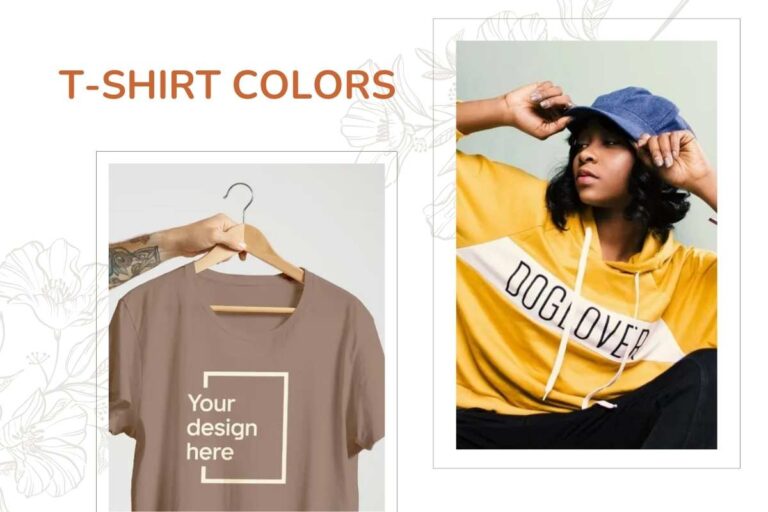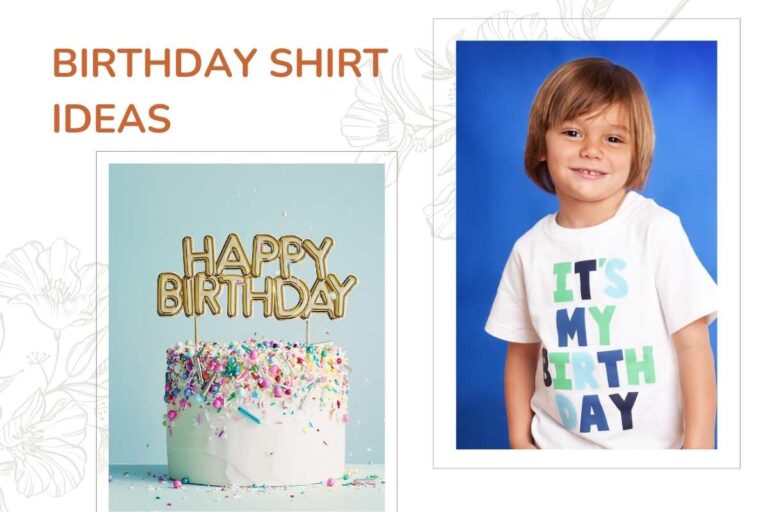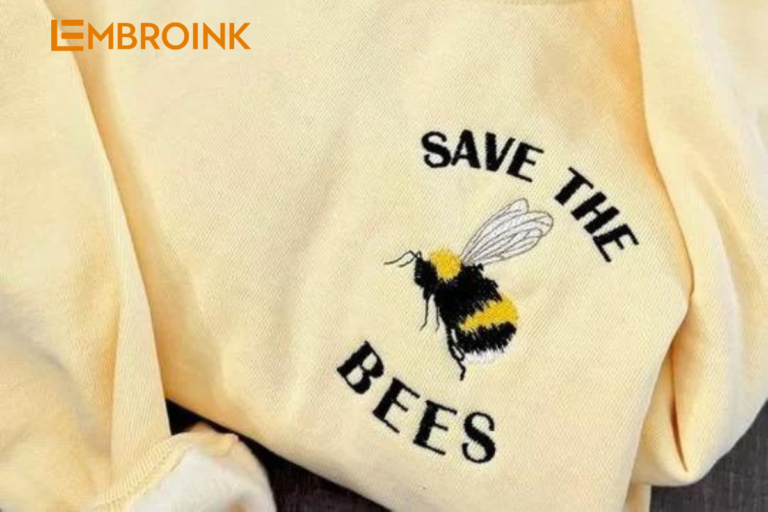Embroidery vs. Screen Printing: Which is the better?
When diving into the world of print-on-demand, a key decision awaits: should you go for the timeless sophistication of embroidery or the striking, modern look of screen printing? These options play a significant role in shaping your brand’s image. If you’re struggling to choose between these two unique styles, you’re not alone. EmbroInk is here to walk you through the details of both embroidery and screen printing, helping you decide which approach best suits your needs.
Embroidery
From repairing torn garments to crafting intricate designs, embroidery has long held a prominent place in the fashion industry. In this section, we’ll explore the details of embroidery and guide you through its production process.
What is embroidery?
Embroidery is the art of decorating fabric or other materials using a needle and thread. Once a handcraft, modern embroidery often utilizes machines, significantly speeding up the process for complex designs and allowing for mass production. However, traditional hand embroidery still allows for artistic expression, where you can experiment with various thread and yarn thicknesses and embellish your designs with colorful beads, sequins, and other decorative elements.

How does embroidery work?
Whether done by hand or machine, embroidery follows a series of steps that turn basic materials into detailed, textured artworks. Here’s a step-by-step look at the modern embroidery process:
- Prepare the design: Start by uploading a compatible digital version of your design, logo, or text. The embroidery machine will use this file to process the stitching. The better the compatibility and quality of the file, the more precise your embroidered design will be.
- Choose the fabric: Selecting the right fabric is crucial, as the density and texture can affect the thread’s performance, potentially causing it to break or create uneven patterns.
- Pick the thread: Different threads create different textures and finishes. Options range from cotton to metallic fibers, giving you a wide array of choices to match your design.
- Decide on colors: The thread colors you choose will influence the overall look of your design. At Printful, for example, unlimited color options allow for embroidery of gradient designs, enhancing the visual impact.
- Choose the stitch type: Select a stitch type that complements your design, whether it’s a flat design or a 3D puff.
- Secure the fabric: Ensure the area of the fabric where the design will be embroidered is securely fixed under the embroidery machine.
- Embroider the design: The thread is hooped to ensure stability and tautness during the embroidery process. The machine then uses needles and bobbins to stitch the design onto the fabric, running until the embroidery is complete.
The speed and accuracy of the embroidery depend on the machine’s precision and the number of stitches per minute.
Screen Printing
Traditional screen printing has a rich history, dating back to the Song Dynasty (960–1279 AD) in China, where early forms of silk screening were developed. But what exactly is screen printing, and how does it work? Let’s walk through the process step by step to help you decide if this customization method is right for your apparel.
What is Screen Printing?
Screen printing is a technique that uses ink, a mesh screen, and a stencil to produce vibrant, high-quality prints of your desired design. This method has become popular in the printing and fashion industries due to its durability and versatility, allowing for sharp, long-lasting prints on a wide range of materials. Screen printing is often chosen for bulk orders, making it ideal for creating vivid graphics on apparel, posters, and other products.
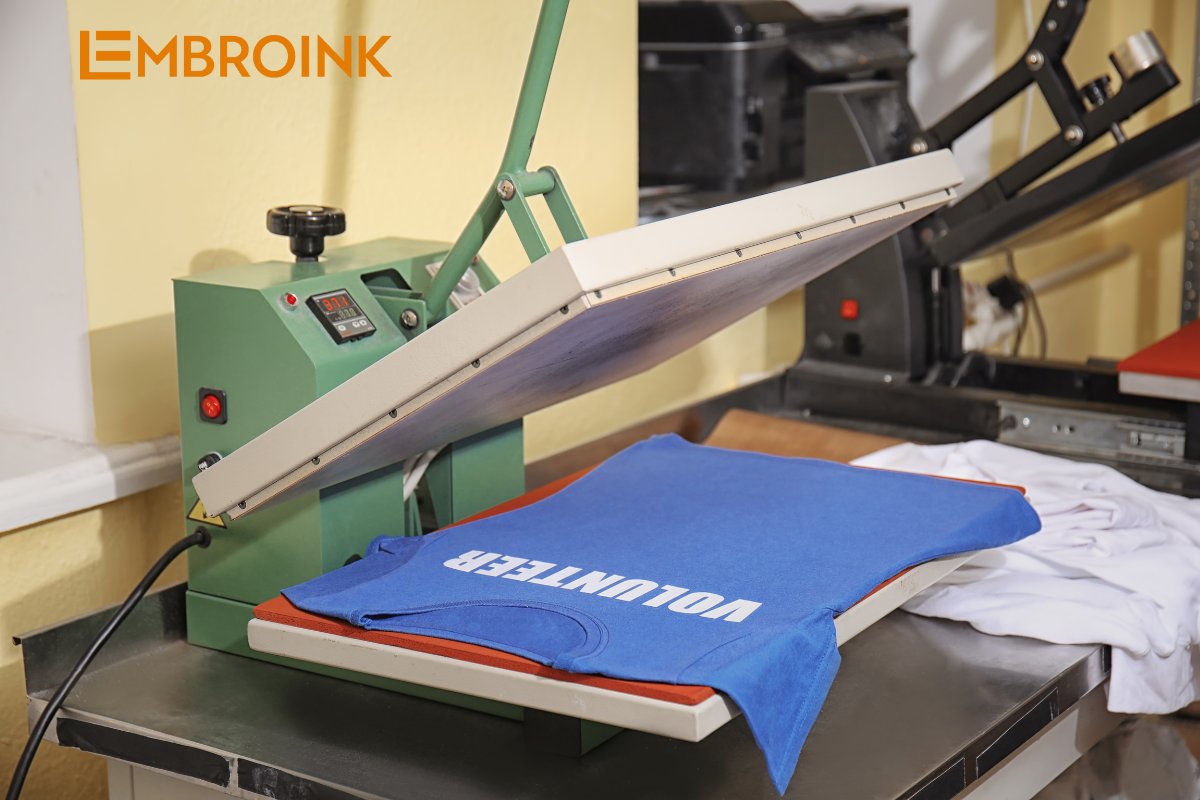
How does Screen Printing work?
To help you understand if screen printing suits your needs, let’s break down the process:
- Design preparation: Start by preparing your design and selecting the inks for the final print.
- Screen creation: A separate screen is created for each layer or color of your design. For more intricate designs, multiple screens may be required. Stencils are typically made by applying an emulsion to the mesh screen, which is then left to dry in a dark room.
- UV light exposure: After the screen is ready, the design is placed on top, and the screen is exposed to UV light. This exposure hardens the emulsion in the areas where the ink will pass through, effectively creating the stencil.
- Ink transfer: The ink is pushed through the custom mesh stencil onto the fabric using a tool called a squeegee, transferring your design onto the material.
- Layering: For designs with multiple colors or layers, this process is repeated for each layer. Each layer must be dried before moving on to the next one.
- Drying time: Finally, allow the ink to dry completely, ensuring the print is set and ready for use.
Screen printing is a detail-oriented and time-consuming process, but the resulting prints are highly durable and vibrant, making the effort worthwhile.
Embroidery vs. Screen Printing: Key differences
When choosing between embroidery and screen printing, it’s essential to understand the key differences. Each method offers distinct advantages, so let’s explore how they compare in various aspects to help you determine which is best for your needs.
Durability
Embroidery is known for its exceptional durability. The tightly stitched threads create a strong bond with the fabric, ensuring that designs remain intact even after frequent washing and regular wear. Embroidered designs resist fading and maintain their vibrant colors over time.
Screen printing also provides durability, but its longevity can be affected by frequent washing, which may cause colors to fade and the print quality to diminish. However, with proper care, screen-printed designs can still last for a long time.
Texture
Embroidery gives your designs a raised, textured feel, with the type of stitch determining the overall effect. This texture adds depth and is ideal for small, intricate designs like logos. Embroidery is often chosen for classic, preppy wear, uniforms, and luxury clothing.
On the other hand, screen printing offers a smooth, flat design surface, making it perfect for modern, bold looks such as streetwear, casual wear, and sports apparel. While screen printing can layer ink to achieve some texture, it generally doesn’t match the raised effect of embroidery.
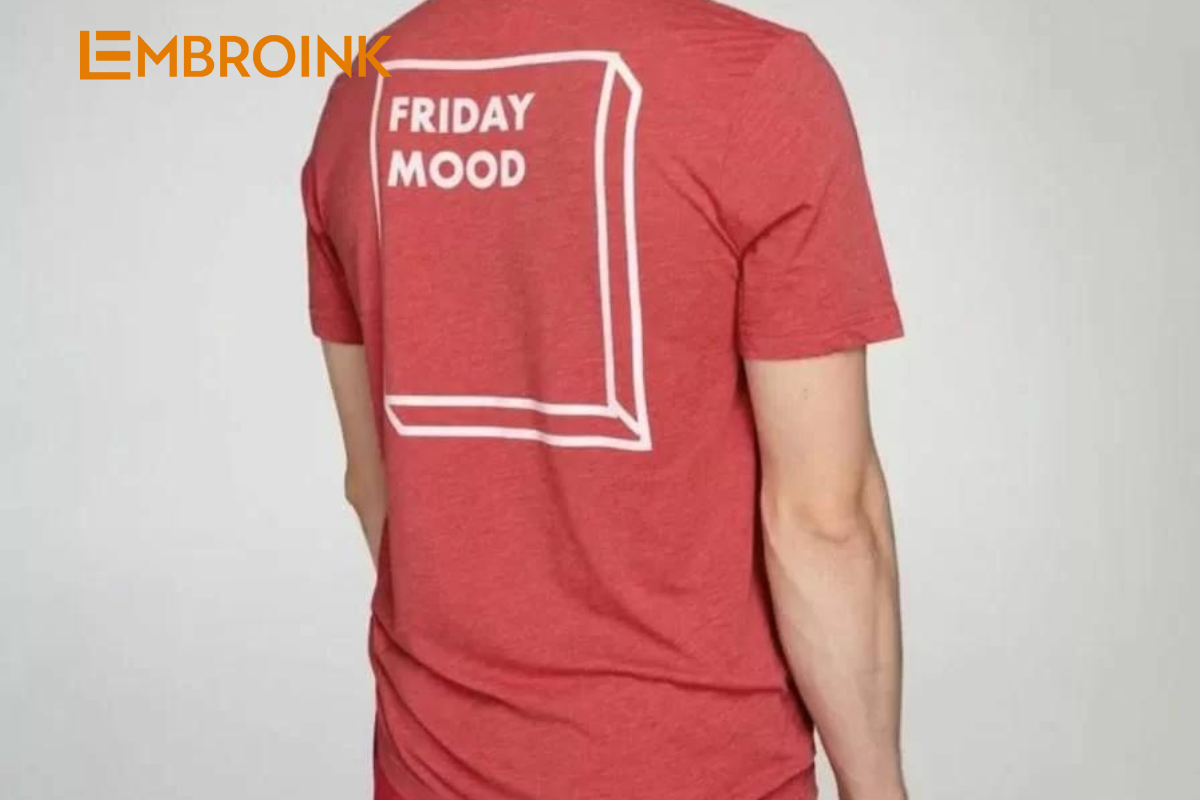
Color variety
Embroidery can sometimes be limited by the available thread colors, as it relies on existing thread options rather than mixing colors. This can be a constraint if your design requires specific shades. However, with services like Printful, which offers unlimited color options, this limitation is minimized.
Screen printing excels in color variety, allowing for ink mixing to achieve precise shades and creating visual effects like gradients, shading, and blending. This flexibility makes screen printing more versatile in color manipulation compared to embroidery.
Fabric compatibility
Embroidery works well on various fabrics, including linen, denim, crepe, and velvet. However, it’s not suitable for waterproof materials like raincoats or diving suits due to the needle holes created during stitching. Embroidery is a great fit for caps, scarves, and polo shirts.
Screen printing is best suited for natural fabrics like cotton, linen, or blends. It doesn’t perform well on stretchy or uneven materials, as these can distort the print. Screen printing is commonly used for t-shirts, hoodies, and similar garments.
Small details
Embroidery offers precision in capturing small, intricate details, making it ideal for text, company logos, and other fine elements. The needle-and-thread method allows for accuracy in small designs.
Screen printing can replicate larger designs effectively, but it may not capture tiny details as precisely as embroidery. For complex designs with minute elements, embroidery is typically the better choice.
Order quantity
Embroidery is cost-effective for both small and large orders, making it a flexible option whether you need a single custom piece or a bulk order. This is particularly advantageous for new ecommerce businesses.
Screen printing, due to its high setup costs, is more cost-effective for bulk orders. It’s a great option for large runs, but may not be ideal if you’re just starting and want to minimize risks with smaller orders.
Look and feel
Embroidery creates a premium, handcrafted look with a raised texture and varied patterns, giving garments a sophisticated and elegant appearance. It’s the go-to choice for those seeking a luxurious feel.
Screen printing offers a sleek, polished appearance with a smooth, flat texture. It’s perfect for a modern, clean aesthetic, and even with large designs, the garment remains comfortable and soft to the touch.
Care and maintenance
Embroidery requires careful handling to maintain its intricate threads and patterns. Turning the garment inside out before washing and avoiding sharp objects that could snag the stitching are recommended.
Screen-printed garments should be washed with care to avoid damaging the print. High temperatures and harsh detergents can degrade the print quality, so separating colors and washing in cool water is advised. Overall, embroidery tends to withstand frequent washing better than screen printing.
In summary, embroidery is ideal for those seeking durability, texture, and a premium look, while screen printing offers versatility in color and a modern, polished appearance. Consider these factors when deciding which method best suits your needs.

What is Embroidery best for?
Embroidery is best suited for creating a premium, professional appearance with a handcrafted touch. It excels at capturing intricate details, making it ideal for small logos, quotes, and charming characters. Due to its versatility, embroidery can be used on a wide variety of fabrics, from linen to velvet, and is perfect for items like custom caps, uniforms, and luxury apparel. Whether you need a unique gift or want to create a professional look for your team, embroidery offers durability and a classic, elegant finish.
What is Screen Printing best for?
Screen printing is ideal for bold, eye-catching designs, particularly when producing custom hoodies, t-shirts, or other apparel in bulk. Its ability to handle a wide range of colors and create striking visual effects makes it perfect for starting a streetwear brand or producing garments with large, vibrant graphics. Screen printing is a cost-effective choice for large orders, offering a smooth, polished look that is well-suited for modern, casual wear and sports apparel.


